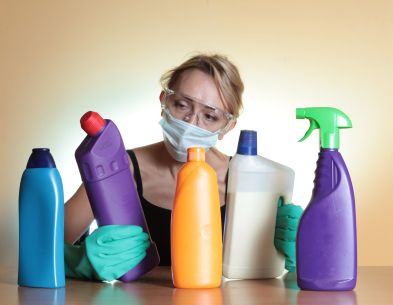Which plastics are safest?

Are Plastics safe?
While it is a hard fact that people really try to avoid Plastics in their personal life as much as possible.
But it should be known that not all plastic is created equally. Some readily leech extremely harmful chemicals while others have slower leaching rates and (comparatively) more innocuous chemical compositions.
The recycling codes which are little numbers inside the triangle made with arrows most often found on the bottom of a plastic product — designate which plastics are more toxic and which are safer.
1: PET or PETE
This is the thin, clear plastic used for bottled water, soda, juices, condiments, etc. This plastic can contain trace amount of the endocrine-disrupting BPA, which has been linked to breast and uterine cancer, an increased risk of miscarriage, decreased testosterone levels, birth defects, and other reproductive issues.
While PET/PETE is relatively stable at normal temperatures, it will leech readily when exposed to heat such as when left in a car. It is for this reason that consumers are advised not to keep water bottles in the car. Since the plastic degrades with use, it is advised to not reuse these plastic products.
VERDICT→ Moderate hazard
2: HDPE (High-Density Polyethylene)
This is the thicker, more opaque plastic found in milk and water jugs, juice bottles, detergent, shampoo, and motor oil containers, and toys. Unlike #1, these are safe to refill and reuse.
VERDICT→ Low hazard
3: PVC (Polyvinyl Chloride)
PVC has been around the block. It’s found in everything from shower curtains to baby bibs, mattress covers, shampoo and liquid soap bottles, cling wrap, cooking oil bottles, and much more. PVC contains endocrine-disrupting phthalates, which have been linked to reproductive problems and birth defects.
The cherry on top: the PVC manufacturing process releases dioxin into the environment, a potent carcinogen that bioaccumulates in our bodies, meaning it stays there for a very long time, if not forever. It also bioaccumulates in animals’ bodies, such as the ones most of us consume, which then make their way into our bodies after we eat them. It is not surprising that workers that manufacture or work with PVC have higher cancer rates.
VERDICT→ High hazard
4: LDPE (Low-Density Polyethylene)
This plastic is used to create flexible plastics products like grocery story bags, plastic food storage bags, bread bags, frozen food packaging bags, plastic wrap, dry cleaning bags, and garbage bags.
VERDICT→ Low hazard

Plastic Recycle Codes
5: PP (Polypropylene)
This plastic is used to create hard but flexible plastic products like yogurt containers, drinking straws, syrup bottles, salad bar containers, and diapers.
VERDICT→ Low hazard
6: PS (Polystyrene)
Found in rigid plastics such as opaque plastic spoons and forks, and in Styrofoam. These plastics can leach styrene, a known neurotoxin with other negative health effects.
VERDICT→ High hazard
7: Other
This symbol includes a range of plastic materials. It includes polycarbonate, which contains the endocrine-disrupting chemical BPA and is most commonly used to for baby bottles, sports water bottles, large 5-gallon water jugs, plastic cutlery, and in the lining of food and baby formula cans.
VERDICT→ High hazard
Make safe choices
… by avoiding plastics with codes 3, 6, or 7 as much as possible, as well as generally reducing your exposure to all plastics.
And remember that regardless of the plastic code, do not microwave foods or drinks in plastic containers, as this causes the plasticizers to break down and leach chemicals.
With inputs from bodyunburdened.com
